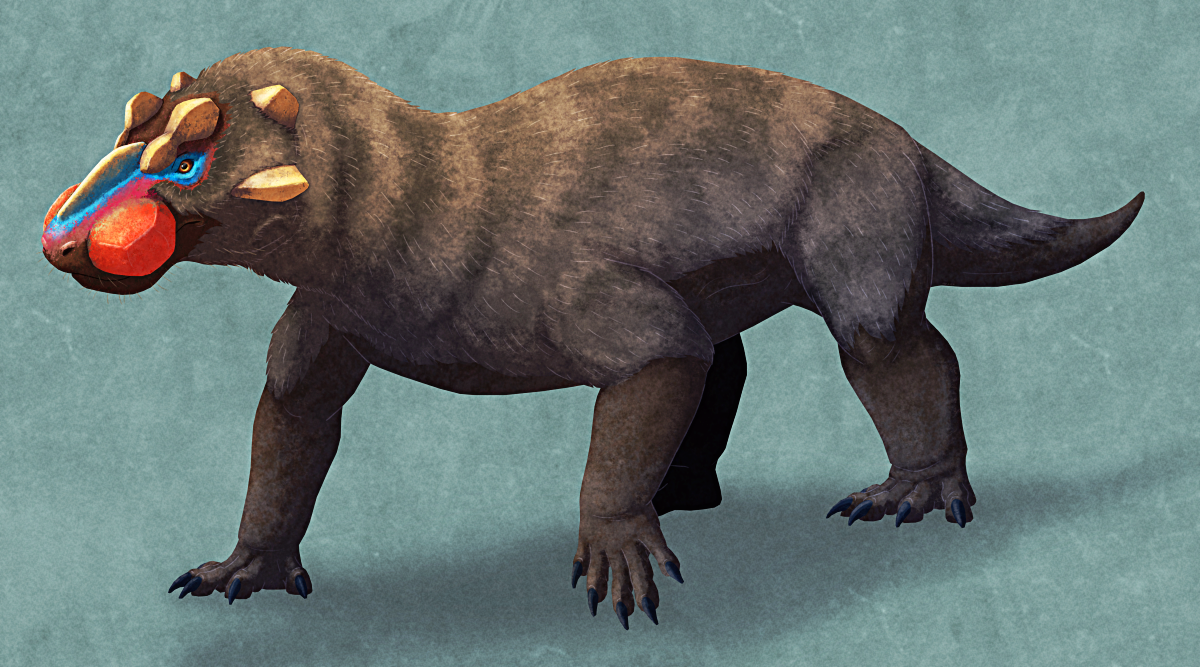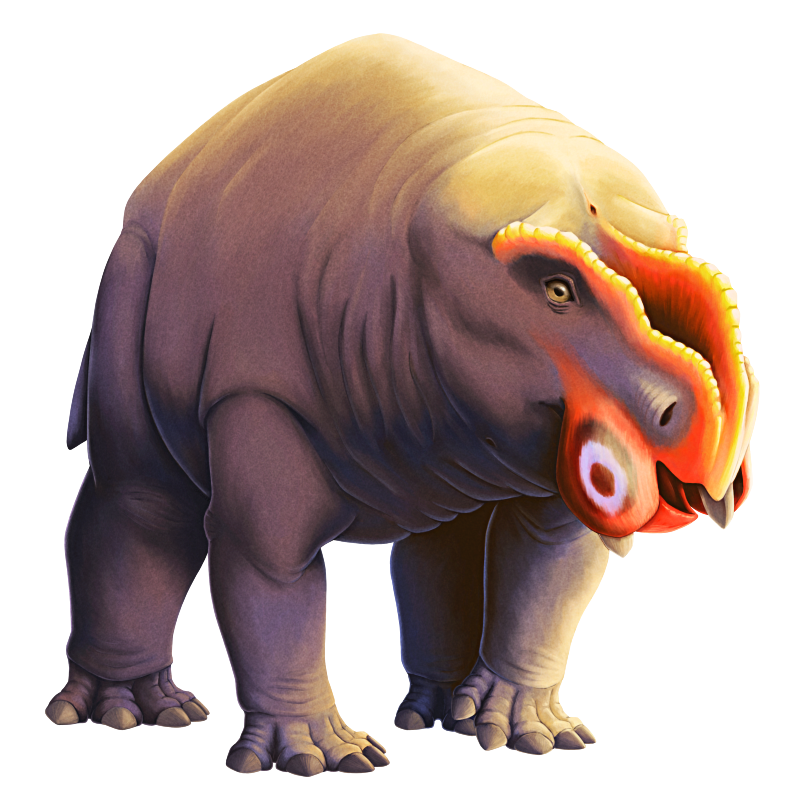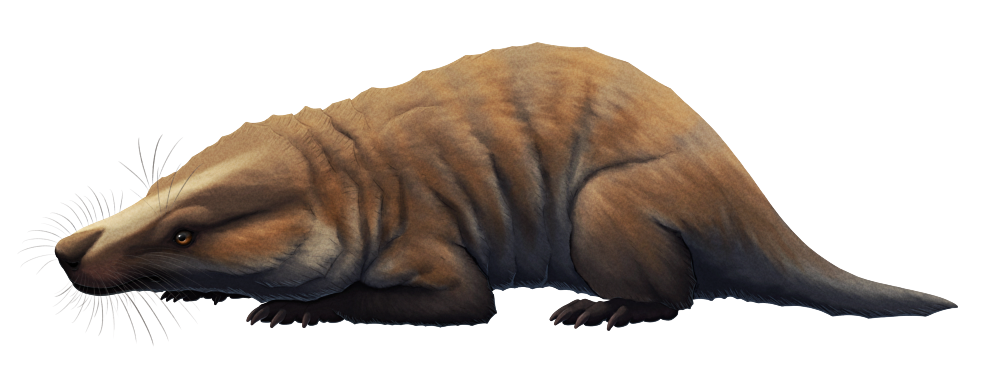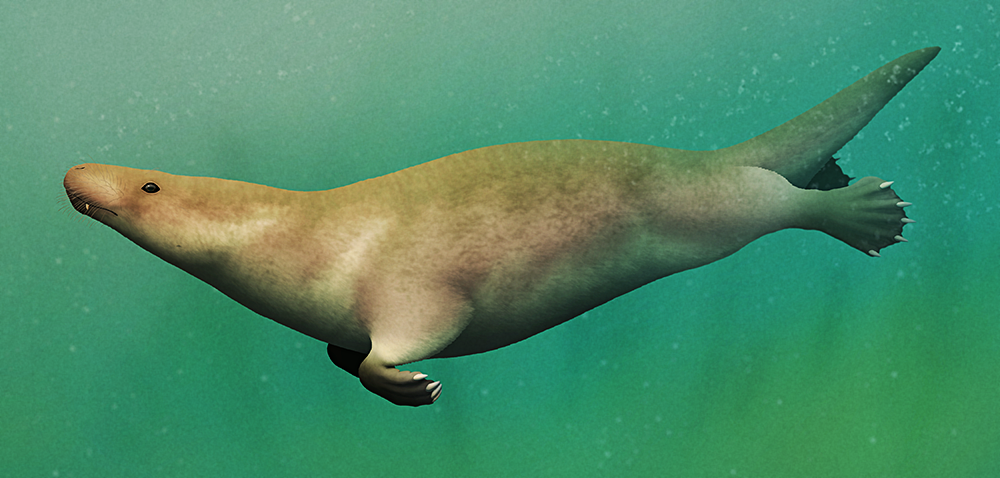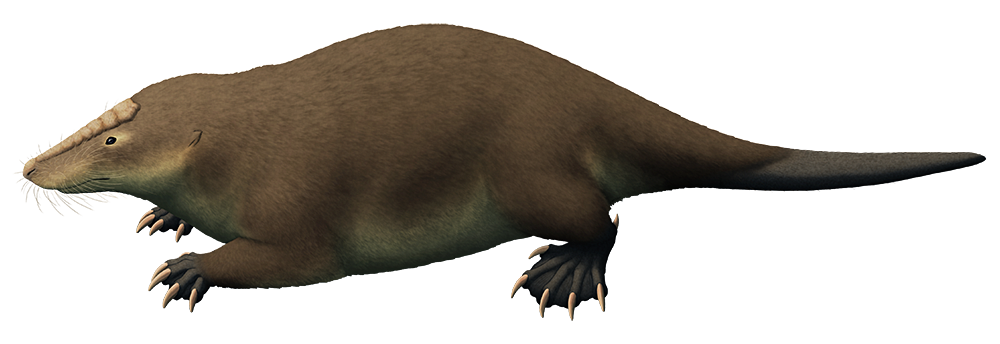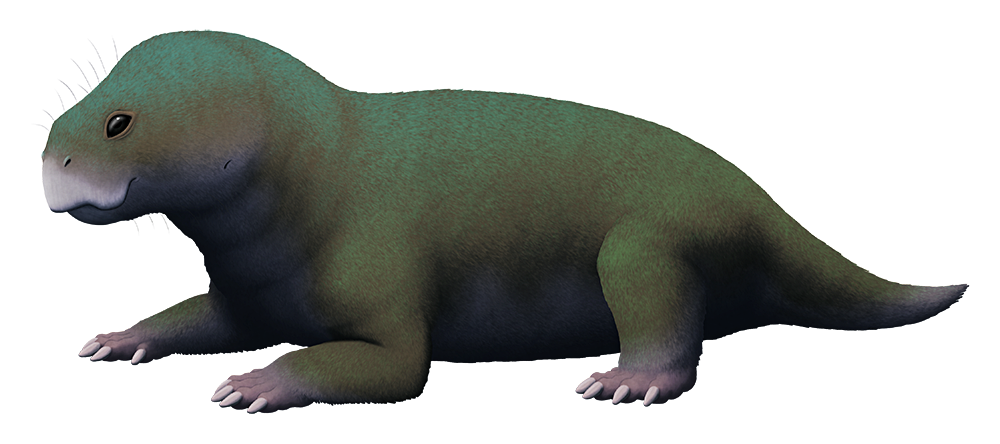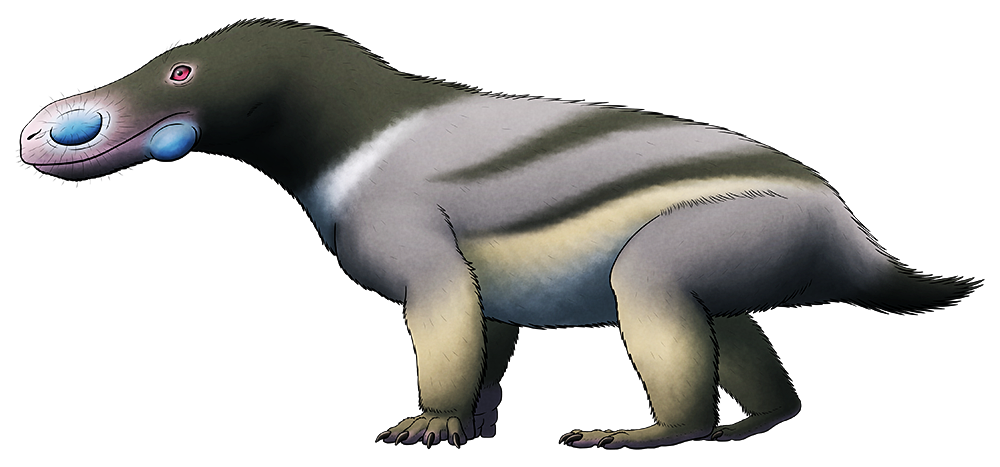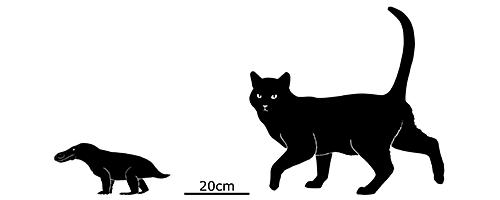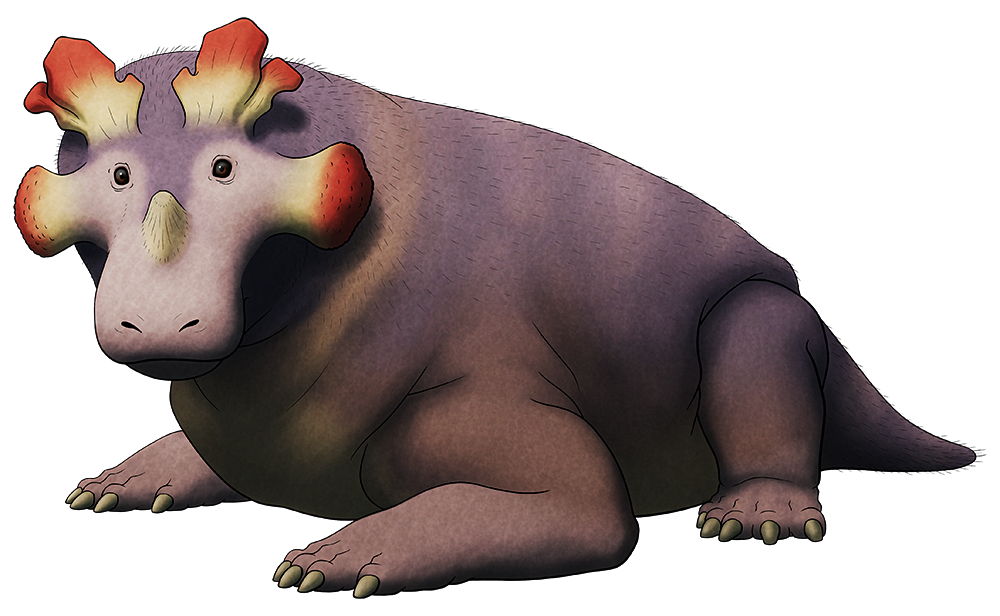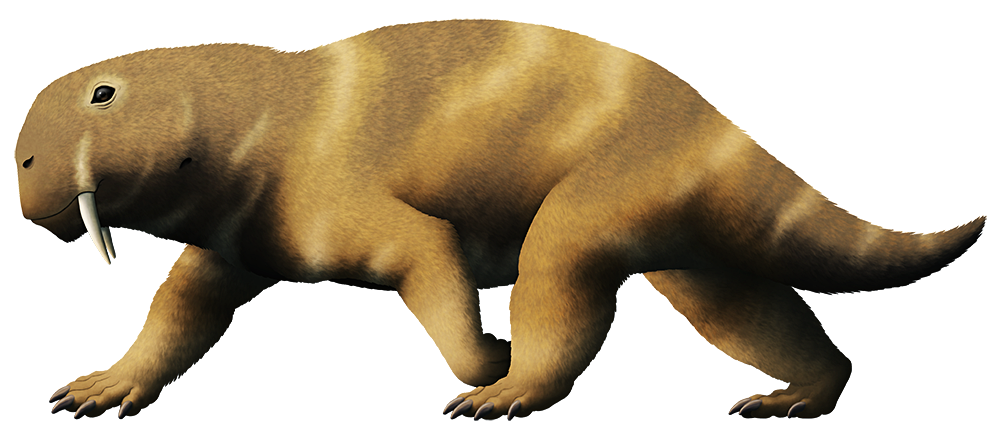Modern mammals are the only living representatives of the synapsids, but back during the Permian there were numerous other evolutionary branches – first the pelycosaurs, and later their descendant the therapsids.
Some of the first non-mammalian therapsids were the biarmosuchians, mid-sized carnivores with a more upright posture than their pelycosaur ancestors. They had large canine teeth in their jaws and powerful bites, and some of them also developed elaborate ornamentation on their skulls, with various bony bumps and crests adorning their faces.
Pachydectes elsi was a 1.5m long (~5′) biarmosuchian living in what is now South Africa during the late Permian, about 265 million years ago. Bone texture indicates its head ornamentation was covered by either tough thickened skin or a keratinous sheath, and the large bulbous bosses on the sides of its snout had a particularly rich blood supply, suggesting these structures could have been continuously growing throughout its entire life.
But despite how well-protected it looked, Pachydectes’ skull was actually relatively fragile and wouldn’t have been able to withstand the impact forces of using its headgear for fighting or defense. Instead it may have been mostly used for visual display – and the blood supply to the snout bosses might even have given it the ability to “blush” them if they had a soft-tissue covering.
Continue reading “Pachydectes”
